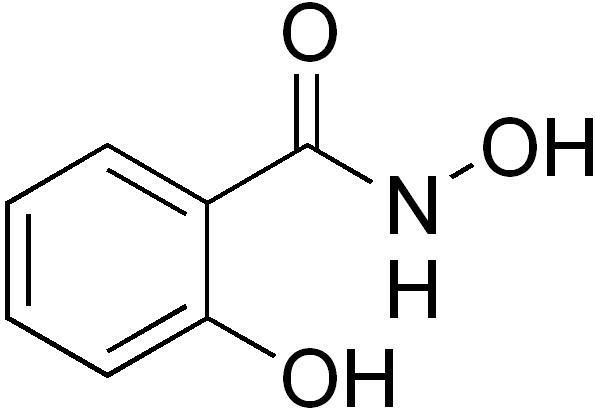 | ||
Appearance Brownish crystalline powder | ||
Salicylhydroxamic acid (SHA or SHAM) is a drug that is a potent and irreversible inhibitor of bacterial and plant urease usually used for urinary tract infections. The molecule is similar to urea but is not hydrolyzable by the urease enzyme. It is also a trypanocidal agent. When administered orally, it is metabolized to salicylamide which exerts analgesic, antipyretic and antiinflammatory effects.
Salicylhydroxamic acid is also a common ligand utilized in the synthesis of metallacrowns.
In plants, some fungi and some protists with the alternative oxidase (AOX) enzyme in the mitochondrial electron transport chain system, salicylhdroxamic acid acts as an inhibitor of the enzyme, blocking the largely uninhibited flow of electrons through AOX. AOX acts as a "short circuit" of the normal electron chain, dissipating electrons with a much-decreased translocation of protons, and therefore diminished production of ATP by oxidative phosphorylation. When AOX is blocked by SHAM, electrons are forced through the cytochrome pathway and through cytochrome IV, allowing observation of the operation of the cytochrome pathway without AOX activity. The AOX pathway is found to be the exclusive electron transport pathway in Trypanosoma brucei, the organism that causes African Sleeping Sickness, meaning that SHAM completely shuts down oxygen consumption by this organism.
